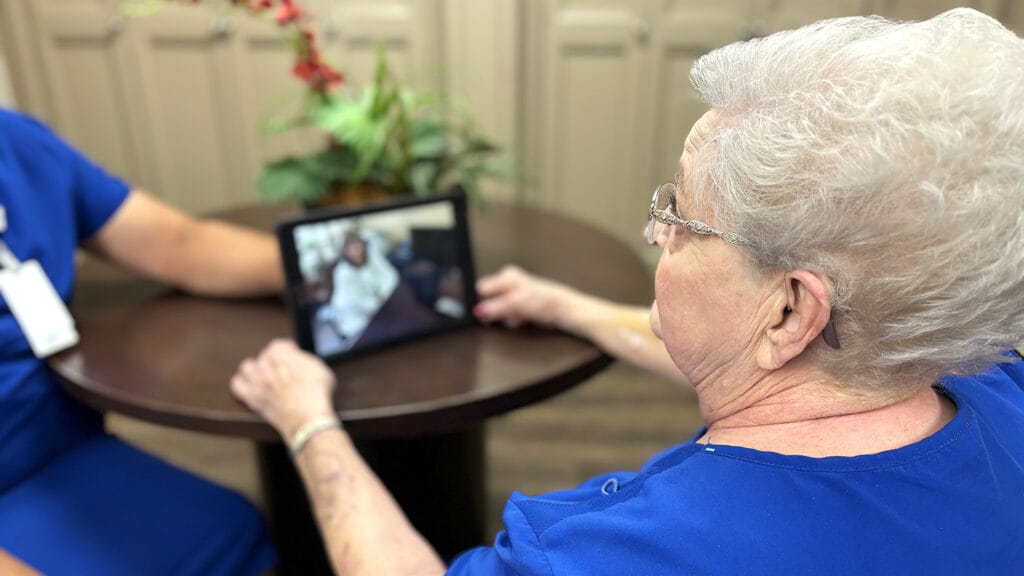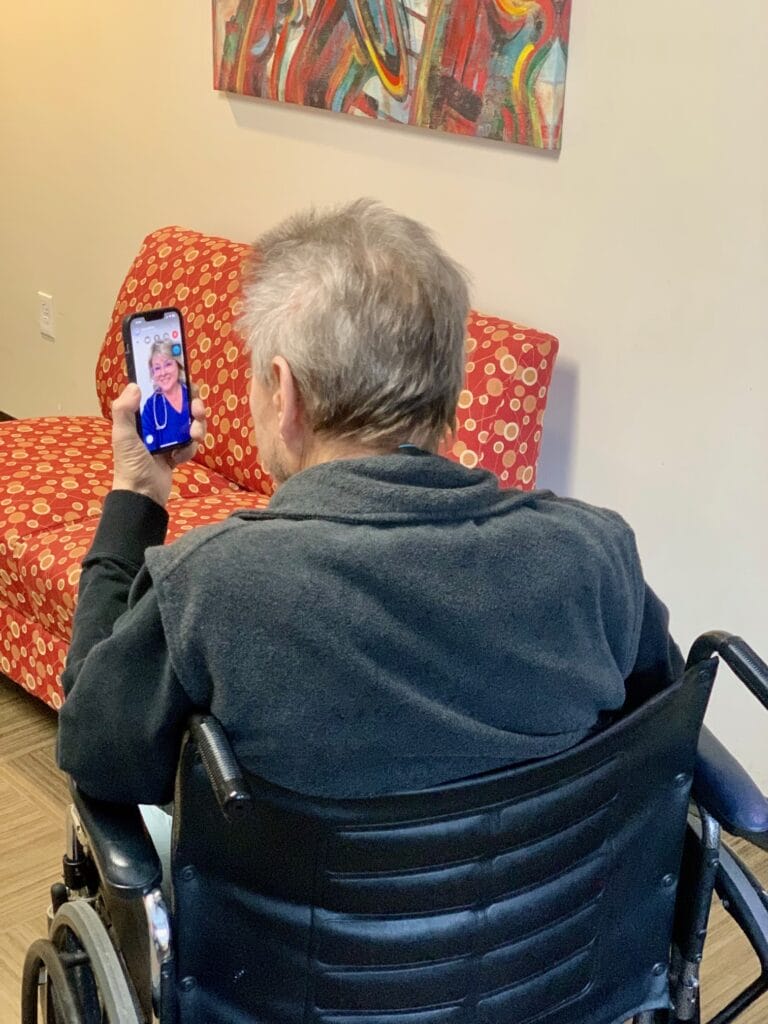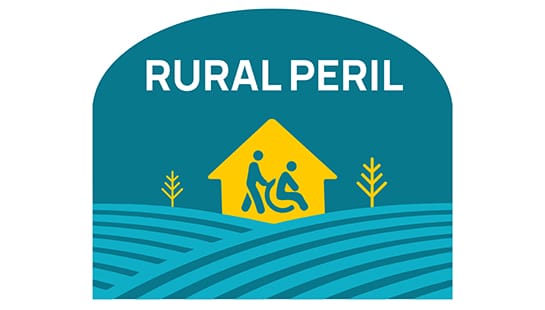
Proven healthcare technologies can help improve patient care and boost staff confidence, but in many rural areas, one major impediment remains: lack of high-speed internet.
For years, administrator Kyle Smith thought about expanding the use of telehealth and other tech tools at his 125-bed nursing home in Decatur County, TN. Available services could help the facility, about 100 miles west of Nashville, link up with outside clinicians in case a patient’s condition changed unexpectedly, he said.
Otherwise, waiting on an ambulance and delivering a vulnerable patient to the closest emergency room in the rural area might be a 45-minute ordeal.
American Health Communities, owner of AHC Decatur County and 28 other facilities in Tennessee and northern Alabama, had tried to do its part.
It had increased investments in technology, particularly since starting partnerships that integrated a mix of on-site and remotely connected advanced practice clinicians and specialists.
Yet it wasn’t until the pandemic that the state of Tennessee made a critical public investment that turned out to be a significant one for Decatur, too. The facility was one of the first to benefit from a nearly $450 million program to bring broadband access to more than 150,000 unserved rural homes and businesses.
Operators believe such access could be a real difference-maker for rural nursing homes disadvantaged by low occupancy, Medicaid underfunding and a labor crisis that has left staff desperate for tools that improve their workflows. How quickly technology resources get to facilities like rural Decatur County will help determine whether they falter or flourish against increasingly tough odds.
“We’re now utilizing [technology] more and our nurses are able to put real-time data into the hands of specialists, like the wound care specialist, or able to, conversely, get real-time information on how to provide care specifically to that patient. We’re not waiting around for multiple days,” said Smith, a 16-year administrator.
“We’ve seen firsthand how that’s improved patient care,” he added. “There is more-readily available information at the fingertips of these providers who are in their offices or at their particular locations many miles from here, but they’re able to give us that information real-time and be able to help us provide that premium level of care.”
Future resource uncertainty
For a 4-star facility like Decatur and its many peers in rural America struggling to attract enough caregivers, technology that reliably provides the right services can fill critical gaps in the care continuum. Rural communities are grappling with a lack of local specialty care, but providers willing to zoom in from a partner hospital or a central hub staffed by clinicians help redistribute those resources virtually.

Still, questions remain about how much providers will be able to rely on telehealth, remote monitoring and other technologies to come in the years ahead — and whether the government will make the needed legal, regulatory and reimbursement changes needed to sustain services.
Much of the telehealth available today in nursing homes has been conducted under waivers issued during the pandemic and extended by Congress through the end of 2024.
“All these things are not permanent yet, and that means there is always going to be a little bit of hesitancy about the degree of expansion and investment in these programs, given the cloud that hangs over it,” said Kyle Zebley, senior vice president for public policy at the American Telemedicine Association.
“While Congress is very supportive on a bipartisan basis of virtual care and telehealth, the dysfunctionality of Congress and the ease with which action can be stymied are kind of our biggest barriers as it stands right now.”
Basic access still impeded
Avoiding a lengthy ride to a hospital and potential lengthy waiting room time for a vulnerable patient, as well as any unnecessary hospitalization, are major telehealth selling points for Smith. He also can’t say enough about the quickness with which his team can now deliver specific care coached by off-site partners.
“We’ve got to advance the ability to have data and healthcare at our fingertips in a more relevant way and more quickly,” he said. “For most things that we’re in need of, we’re now within minutes of sitting down and using an app for the devices that we have in-house and being able to reach out and get ahold of that nurse practitioner or that doctor, or maybe a specialist.”
His facility is covered 24/7 by a nurse practitioner group provided by American Health Communities. The company also has pushed out more tech tools through a COVID-era grant-writing campaign.
Sonya Pusser, assistant vice president of clinical operations for the chain, described an evolution from using tablets specific for virtual visits during the pandemic to the purchase of telehealth carts stocked with vitals monitoring tools to support virtual visits in patient rooms.
Those tools were outmoded quickly, however, by access provided through handheld devices. Now, the company has turned its focus to converting to a more robust EHR system that will provide deeper patient insights and interoperability.

Costs associated with constantly changing or updating tech tools can dampen enthusiasm and usefulness. A 2023 study found that, nationwide, 28% of nursing homes failed to scale up, spread or sustain technology they adopted between 2019 and 2021.
Pusser said investments in training and building a culture that appreciates and embeds telehealth services will be a critical part of creating sustainable solutions.
Streamlining approaches as much as possible for busy frontline staff makes them more comfortable and willing to turn to the added resources, she added.
Left ‘shaking their heads’
But even for providers able to invest in devices, services and training, internet quality too often limits potential reach.
“You’re stuck with one option usually,” said Jill Gengler, administrator at the 50-bed Chippewa Manor Nursing and Rehabilitation in Wisconsin. “And it may be working great. But when it’s not, you don’t have a plan B. That is a challenge, for sure.”
Then there are those facilities without dependable internet. More than 22% of Americans in rural areas lack quality, high-speed internet coverage, compared to only 1.5% of Americans in urban areas, the Federal Communications Commission found in 2020.
In 2018, the federal government launched a multi-year project to pump hundreds of millions of dollars into rural telecommunications infrastructure to support residents and businesses, including healthcare settings. The program was renewed-upped twice during the pandemic, providing loans and grants to states and community organizations to build better networks in areas with populations under 20,000.
Some states, Tennessee for instance, have embraced the national strategy. Those that haven’t are leaving rural nursing homes and their patients at a continued disadvantage.
“We have a lot of problems with Wi-Fi and connectivity in rural Nebraska,” said Kierstin Reed, CEO of the state’s LeadingAge branch. “There’s a push in the Legislature [to expand it] but it hasn’t gotten to the point of implementation yet. So we have providers in more urban areas that are looking at things like robots to assist with workflow technology, and rural providers are shaking their heads.”
Many small, independent facilities there still use spreadsheets and have limited email access. They don’t have EHRs, much less other services that link up securely to integrate into telehealth platforms or referral networks.
Enticing possibilities
Should federal and state initiatives pay off with major connectivity improvements, proponents of telehealth believe it could be a game-changer for preserving long-term care access.
But the government needs to make devices and services affordable through its reimbursement policies, they said. The current system allows providers to bill for telehealth visits, but remote monitoring and other evolving tools have to be covered as part of a facility’s operating budget.
“Even if we get all of that [broadband] investment out the door as quickly as possible, there are still going to be some inhibitors. There will still be some communities that haven’t closed the gap,” Zebley said. “Many of our facilities will still not have the needed investment to make sure they are deploying the right kind of devices that will allow for the full, robust ability to access telehealth modalities that are now available and will continue to expand and in future.”
Zebley predicts telemedicine of the future will lean heavily on tools that support continual monitoring of patient vitals to prompt needed care through communication with frontline staff. Those routine checks can help ease overworked aides in short-staffed buildings.
“Telehealth won’t create new healthcare workers, but it can right-size the need with the supply,” he said.
Zebley added that permanent telehealth provisions should remove outdated barriers regarding days of coverage provided or excluding now-proven approaches such as remote patient monitoring tools.
Staffing mandate alternative sought
One specific allowance several rural providers are seeking is the use of remote consultation by off-site registered nurses or other advanced clinicians to comply with the proposed federal staffing mandate that calls for 24/7 RN coverage. For facilities that can’t hire RNs because of local unavailability, such a solution could bring additional oversight and assistance to an in-building licensed practical nurse, as needed.
In their formal comments on the rule, leaders of the American Health Care Association; Good Samaritan Society; Diversicare, Alabama’s largest skilled nursing provider; and others asked for that specific exception.

Credit: AHC
“A similar model has already been proven to be effective through remote physician care,” AHCA noted. “Further, many facilities have already effectively incorporated the use of physician/practitioner telehealth or remote RNs when in-person meetings, evaluations and visits were not feasible due to the state of the COVID-19 pandemic.”
Gengler said she sees the remote RN solution as appropriate for rural nursing homes whose patient populations are relatively low-acuity. But she worries that some solutions have and will continue to be stymied by regulatory rigidity.
“There are already ways we can monitor folks electronically with surveillance tools. If they’re engaging in a risky behavior, we can intervene sooner,” she said. “But regulations are going to have to be a lot more nimble.
“They’re so restrictive right now that it’s hard to be responsive to a new environment of technology and ideas when the [surveyors’] expectations are so set in stone. We really have to see some more innovation by the regulators to be able to explore those options.”
Missed the earlier installments of Rural Peril? Be sure to read about dwindling access and the role of staffing here. And look for the final installment on Monday, Jan. 29.





